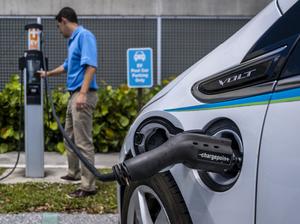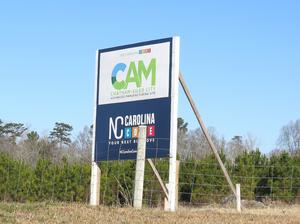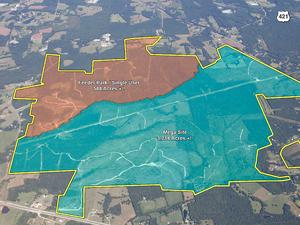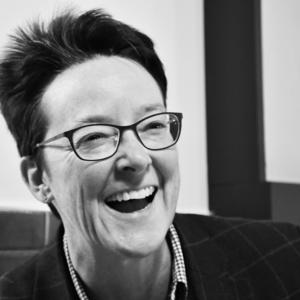
The Carolina Core, the 120-mile swath of North Carolina from Winston-Salem to Fayetteville, is poised to become the Electrification Core under new incentive deals that have surfaced.
Toyota is, of course, building a plant to make batteries for electrified vehicles at the Greensboro-Randolph megasite in Liberty, just south of the Guilford County line, employing 1,750 people in the $1.29 billion first phase. That project was already slated to grow potentially to 3,875 and $3.4 billion under a second phase when Toyota initially committed to the site. But last week, legislation emerged in the General Assembly that would provide $225 million to grow the project there to a $4.7 billion investment, creating 5,000 jobs by 2034.
Meanwhile, in neighboring Chatham County, VinFast is working fast on its plant to make electric cars and SUVs, including their batteries, in a $7 billion investment it says may employ 7,000 people when fully operational.
Meanwhile, as Triad Business Journal reported June 29, state lawmakers are signaling that a major semiconductor company may be on the verge of announcing a big plant. A section of the state budget bill legislative leaders agreed to last week contains money to help an unidentified semiconductor company build a plant in Chatham County with water supplied by neighboring Asheboro. The project, with a $4.8 billion investment, would rank as the largest in the state's history, while also providing at least 1,800 jobs. Though no company is named, the move comes as Durham-based Wolfspeed plans to expand production, especially to support the automotive industry.
It would all add up to a nest from which could be hatched a battery-and-vehicle industry.
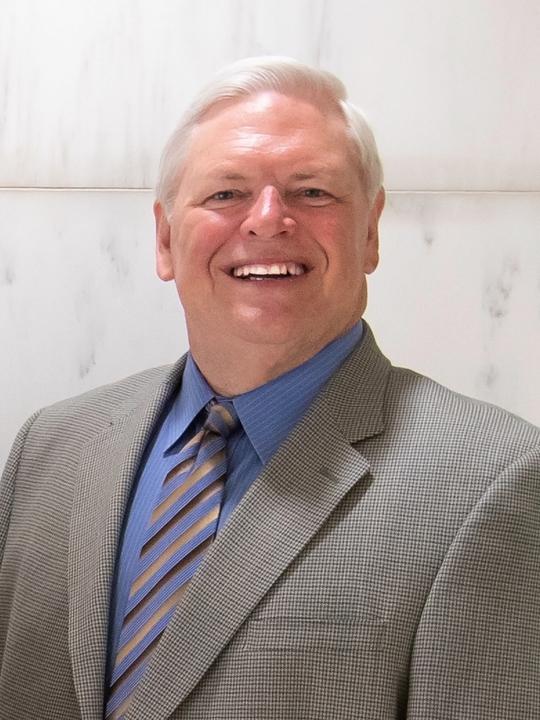
“A semiconductor plant at the Chatham-Siler City Advanced Manufacturing Megasite – assuming it does business with the automotive industry – would anchor a new ‘Carolina Core electric-vehicle corridor’,” Loren Hill, the Piedmont Triad Partnership's Carolina Core director, told the Triad Business Journal.
“Such a semiconductor facility would be well-positioned to do business with our already-announced automotive projects, since the CAM site is between those other two megasites – 17 miles from the Greensboro-Randolph Megasite/Toyota Battery and 29 miles from Triangle Innovation Point/VinFast.”
If all this were to come to pass, central North Carolina could stand to gain thousands of jobs.
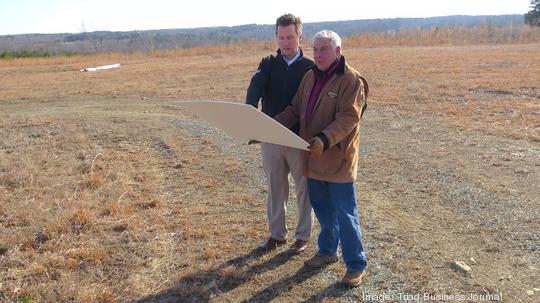
Amplifying promised jobs
The Semiconductor Industry Association says the industry’s jobs multiplier is 6.7, meaning for each U.S. worker directly employed by the semiconductor industry, an additional 5.7 jobs are supported in the wider U.S. economy. If a new chip fab delivered 600 jobs, the number Wolfspeed expects eventually at its New York state plant, that would mean 4,020 jobs. Using the industry multiplier against the 1,800 computer chip plant jobs referenced in the budget bill, the ripple effect for whatever chip maker were to land there could be 12,060 jobs or more.
Automakers in general have a multiplier of 7.6 jobs, and 17.8 for an auto assembly plant, according to the American Automotive Policy Council. If the manufacturer mentioned in the Randolph County incentive appropriation delivered 5,000 jobs, that would be 38,000 jobs at the low end, and 89,000 at the high end.
For comparison, Randolph County had about 65,500 jobs in all as of April, according to the Randolph County Economic Development Corp.
Could it be assembly?
Regarding the new incentives proposed for the Toyota site, Piedmont Triad Partnership President and CEO Mike Fox in a TBJ interview last week referred back to comments by Toyota Motor North America Chief Administrative Officer Chris Reynolds at the December announcement. The comments were taken to leave the possibility of the proverbial holy grail of economic developers, an actual vehicle assembly plant like what VinFast plans.
“He said, ‘This is the first chapter in a very long book for Toyota in this community’,” Fox said. “And while no one at Toyota has explicitly said publicly, ‘We're going to make automobiles here,’ that's certainly an implication that a lot of people have drawn from his comments and the fact that they have said they have additional plans for this site.”
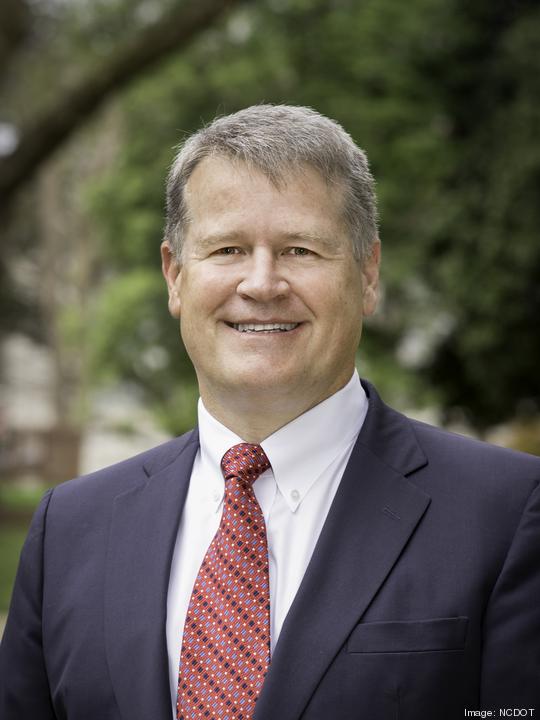
Gov. Roy Cooper did not hide the state’s ambitions for the site when he spoke at the December announcement: “We hope in the future everything that goes around the battery will be part of this as well."
Emily Wilemon-Holland, corporate communications manager for Toyota North Carolina, in a telephone interview Tuesday, had no clarity on whether the company is considering an assembly plant, more battery-production capacity, or some other possibility.
“Right now we’re just studying for the competitiveness of the site,” she said. “We want to be ready if a possible future expansion opportunity arises.”
As for an assembly plant, in a general sense, "we can never rule anything out," she added.
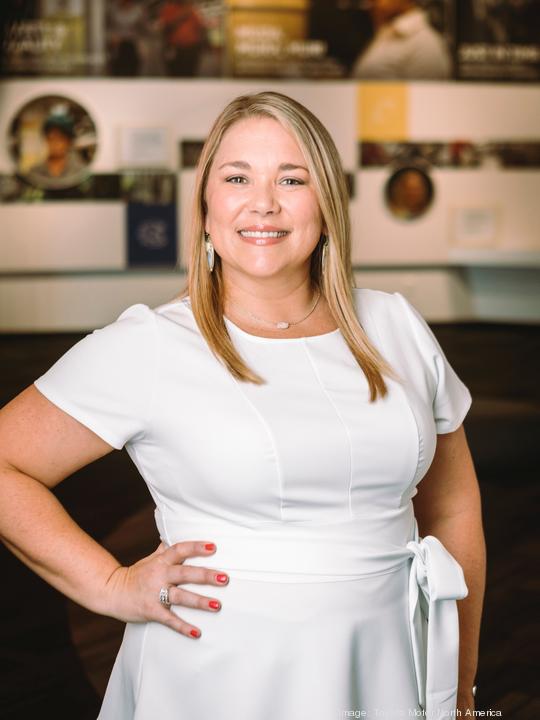
Perhaps a safer bet would be that Toyota's ambitions are for a bigger battery-making operation.
Toyota has made clear it wants to sell more electric vehicles. It anticipates the Liberty factory will produce battery packs for 1.2 million electrified vehicles per year, though not at first. In its December announcement, it said that when it comes online in 2025, the North Carolina plant will have four production lines, each capable of delivering enough lithium-ion batteries for 200,000 vehicles, with the intention to expand to at least six production lines for a combined total of up to 1.2 million vehicles per year.
Toyota expects to sell 8 million electrified vehicles globally by 2030 and invest $70 billion in their development.
In its quarterly and first-half-year report July 1, Toyota noted that first-half sales of electrified vehicles represented 25.5 percent of total sales: 266,413, vehicles in all. That’s compared to 23 percent through the first half of 2021. Toyota said it has 20 electrified Toyota and Lexus vehicle options – that is, hybrid electric-fuel, or all-electric.
This will be Toyota’s first plant making its own batteries. Now, the batteries in its hybrids and its all-electric models are sourced from others. One is Prime Planet Energy & Solutions, a joint venture between Toyota Motor Corp. and Panasonic Corp.
Toyota said it expected that 70 percent of its vehicles would be electrified by 2030, up from 25 percent now. The 2030 target for U.S. sales is 1.5 to 1.8 million electrified vehicles in all. Some, however, will have fuel cells instead of batteries, but it’s clear Toyota will need more vehicle batteries and that it wants to make them itself.
Semiconductor power play
Meanwhile, state-level economic developers are keen on luring a major semiconductor company. The Chatham-Siler City site is owned by two Triad businessmen, Tim Booras and D.H. Griffin, and marketed by Greensboro-based Samet Corp. While Brian Hall, Samet president for real estate, declined on the owner's behalf to comment, they had previously told Triad Business Journal that their site had been getting unprecedented activity, especially in the wake of the Toyota and VinFast deals.
Local economic development officials were also unable to provide more clarity. Messages for Michael Smith, the president of the Chatham County Economic Development Corp., were not returned by press time. Randolph County Economic Development Corp. President Kevin Franklin and Greensboro Chamber of Commerce President and CEO Brent Christensen, who led the efforts that landed Toyota in the first place, told the TBJ they had no information regarding Toyota's plans or the specific intent of the legislation.
Emails and phone calls to area legislators in the past week received no response except from Rep. Jon Hardister R-District 59, Guilford County, the House Majority Whip, who offered by email: "I can only say that it is to incentivize any additional facility and jobs investments that the company may make...."
The state budget agreement – which still needs ratification by the whole General Assembly and the governor’s signature – appropriates $112.5 million to the Department of Commerce for the chipmaker. No company is named, but among semiconductor-industry companies looking to significantly expand is one already rooted in North Carolina: Wolfspeed, the Durham-based company, formerly known as Cree and formed by North Carolina State University researchers that initially worked on semiconductor lighting but which has since switched to making devices based on silicon carbide.
Silicon carbide is seen by Wolfspeed and many analysts as the next generation of semiconductors. It can work much more efficiently, which enables battery designers and car manufacturers to offer vehicles with longer ranges or, conversely, the same range at lower cost than devices using traditional silicon semiconductors.
Wolfspeed also sells to other industries, including power distribution and generation, telecommunications, and defense. But its president and CEO, Gregg Lowe, is targeting electric vehicles. It signed a deal with both General Motors and Lucid Motors, a company founded by an engineer formerly with Tesla and which produced its first all-electric cars in September at a new factory in Arizona. Automotive uses included components for battery charging on vehicles and at charging stations, drivetrain inverters, and inverters to run things like power steering, lights, and air conditioning.
In April Wolfspeed officially opened a new high-tech fabrication facility in the Mohawk Valley region of upstate New York, lured by billions in New York state and local incentives. The factory is projected to employ about 600 people when fully operating by 2029. But company officials have made clear they need more.
A company spokesperson told the TBJ that the company is in its quiet period before its next quarterly report and could not comment now.
In a May conference call with analysts who cover the industry, Lowe said the company is well along in planning its next fab, as such plants are often called.
“The fab that we just put in place, the Mohawk Valley fab, is the world's largest silicon carbide fab,” Lowe told the analysts. “When we build the next fab, Mohawk Valley will be the world's second-largest wafer fab. So the wafer fab that we would be building would be bigger than what we have for in Mohawk Valley, and that's just based on the demand we see coming online.”
